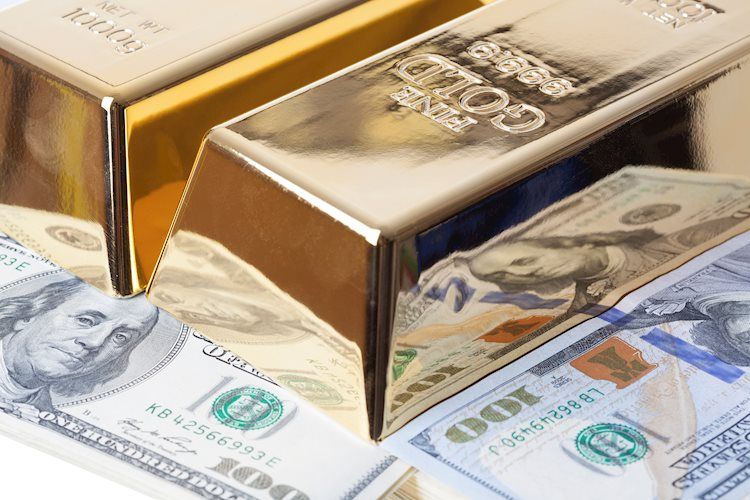Category: Forex News, News
XAU/USD flat lines above $2,600 as traders await fresh catalysts
- Gold trades flat around $2,625 in Monday’s early Asian session.
- More cautious approach to monetary easing next year from the Fed drags the Gold price lower.
- Softer US PCE inflation data, the upturn in China’s Gold demand and geopolitical risks might the downside for XAU/USD.
Gold price (XAU/USD) holds steady near $2,625 during the early Asian session on Monday. The hawkish stance of the Federal Reserve (Fed) might weigh on the yellow metal. However, the softer Greenback after the weaker inflation report could cap its downside.
The Fed lowered interest rates in the December meeting as expected but signaled that it will slow the pace at which borrowing costs fall any further. The Fed’s dot plot, a chart that projects the future path of interest rates, indicated a half-percentage point rate cut in 2025, compared with a full percentage cut projected in September. This, in turn, continues to lift the US Dollar (USD) and undermine the USD-denominated Gold as higher real interest rates increase the opportunity cost of gold.
On the other hand, softer-than-expected US inflation data could help limit the precious metal’s losses. The US inflation, as measured by the Personal Consumption Expenditures (PCE) Price Index, rose to 2.4% YoY in November from 2.3% in October. The reading came in below the market consensus of 2.5%. Meanwhile, the Core PCE jumped 2.8% in November, compared to 2.8% In the previous reading, but below the 2.9% expected.
The upturn in Gold demand in China might contribute to the yellow metal’s upside as China is the world’s largest Gold consumer nation. With less than 6 weeks until Chinese New Year, the world’s heaviest gold-buying festival overtakes Diwali in India. Additionally, the ongoing geopolitical tensions in the Middle East could boost the safe-haven flows, benefiting the Gold price.
Gold FAQs
Gold has played a key role in human’s history as it has been widely used as a store of value and medium of exchange. Currently, apart from its shine and usage for jewelry, the precious metal is widely seen as a safe-haven asset, meaning that it is considered a good investment during turbulent times. Gold is also widely seen as a hedge against inflation and against depreciating currencies as it doesn’t rely on any specific issuer or government.
Central banks are the biggest Gold holders. In their aim to support their currencies in turbulent times, central banks tend to diversify their reserves and buy Gold to improve the perceived strength of the economy and the currency. High Gold reserves can be a source of trust for a country’s solvency. Central banks added 1,136 tonnes of Gold worth around $70 billion to their reserves in 2022, according to data from the World Gold Council. This is the highest yearly purchase since records began. Central banks from emerging economies such as China, India and Turkey are quickly increasing their Gold reserves.
Gold has an inverse correlation with the US Dollar and US Treasuries, which are both major reserve and safe-haven assets. When the Dollar depreciates, Gold tends to rise, enabling investors and central banks to diversify their assets in turbulent times. Gold is also inversely correlated with risk assets. A rally in the stock market tends to weaken Gold price, while sell-offs in riskier markets tend to favor the precious metal.
The price can move due to a wide range of factors. Geopolitical instability or fears of a deep recession can quickly make Gold price escalate due to its safe-haven status. As a yield-less asset, Gold tends to rise with lower interest rates, while higher cost of money usually weighs down on the yellow metal. Still, most moves depend on how the US Dollar (USD) behaves as the asset is priced in dollars (XAU/USD). A strong Dollar tends to keep the price of Gold controlled, whereas a weaker Dollar is likely to push Gold prices up.
Source link
Written by : Editorial team of BIPNs
Main team of content of bipns.com. Any type of content should be approved by us.
Share this article:








